 We decided to build a pad for our gazebo up under the oaks. It's a nice structure:
We decided to build a pad for our gazebo up under the oaks. It's a nice structure: But because it's unfurnished and just sitting on the grassy slope, we almost never use it. I took an old sheet of OSB up there one day, and some cardboard, for a bed, so I could lay down and get out of the heat. I even slept one night up there. But insects kept crawling on me, and of course there were the inevitable ticks. I figured we could give it a nice pad for a $100 using landscape timbers, extra dirt from the barn, and some spikes and rod. And about two day's labor. So once I had the stem wall done in the barn, we started work up there.
But because it's unfurnished and just sitting on the grassy slope, we almost never use it. I took an old sheet of OSB up there one day, and some cardboard, for a bed, so I could lay down and get out of the heat. I even slept one night up there. But insects kept crawling on me, and of course there were the inevitable ticks. I figured we could give it a nice pad for a $100 using landscape timbers, extra dirt from the barn, and some spikes and rod. And about two day's labor. So once I had the stem wall done in the barn, we started work up there.We didn't have any internet access at the property (an invaluable, comprehensive source of information on any building project), so I had to make things up as I went along. But when I did come back to Atlanta and read about how landscaping with these timbers is done, I'd done exactly the same thing. Building is pretty simple, and if you think it through you often come to the same conclusions.
We drove to Lowe's and got a dozen 8' landscape timbers. They're about 3.5" in height, and 5" in width. I also bought more rebar, and a few packets of landscape spikes.
The gazebo is 10'x10', and I need a pad a little bigger than this to fit it, so I went with a 12'x12'. Since the timbers are 8' long, I can simply cut some in half and stagger the joints to get a strong 12' retaining wall.
The hillside slopes down towards the oaks. So I felt if I could make a U with the timbers, the highest wall will be held upright by the walls at either end keying in to the soil.
The first thing to do is install the timbers. I put the back 12' bottom course in first, digging and using rock for props till I got it level. These timbers are cheap and only surface treated, so the less contact they have with the soil the better. Much of the bottom course was propped on rock. Then I drilled 3/8" holes to pound the rod through ( it's always better for the hole to be a little smaller than the diameter of the rod so it's snug). I use 24" lengths of rod pounded deep into the ground, 3 for every 8' timber. So ultimately 5 for the whole 12' row.
On top of this bottom course, go the outside rows of timber perpindicular at either end. I key these into the soil (run the length straight across and level till it terminates completely underground). I again use rod on this to bind it tightly to the ground. And at the corners, where it's timber on timber, I pound in a landscape spike (think giant nail). They're hell to drive, I use a 2lb sledge, but they have a terrific hold. And what's nice is that the timbers are thick enough in girth so they don't split. It's easiest to cut every one with a handsaw. It always amazes me how quick a handsaw can burn through wood. There's nothing like good hand tools.
I basically just build up at this point. I keep laying more timbers, staggering every joint, and using spikes to attach wood with wood. On the outsides of the U, where the upper row is always overlapping the row below it, as the land rises, I key into the soil and pound in rod at the end. My thinking is that there will be all this force of earth pushing out on the main retaining wall, and these rods are like teeth dug 2 feet in resisting any movement.
Since the heads of the spikes are covered when I lay the next row of timbers, I've taken sticks to mark approximately where I put them in. A spike goes through two and into the third timber, so I don't want to be putting a spike into another spike, or even close to one, because of the danger of splitting.
I use quite a few spikes, maybe 20 to 25. And they're nearly a dollar a piece. So quite an expense here, but the bigger the nail, the better.
The next step is to take out all the sod, which is a step I'd like to skip, after all the hell I went through getting sod out of the barn. But it's only a 12'x12' space, and the spading fork makes quick work of it. We transplant the sod to a nearby barren area.
I have a ton of loose dirt in the back left of the barn, from digging so deep there for the perimeter foundation. So I haul all this up to the pad with a wheelbarrow. It's unbelievable how heavy a full load of dirt is. It's backbreaking. And it's a steep climb up to the gazebo:
 I bring up load after load, and Patty and the girls rake and tamp. The tamper is too heavy for the girls to use, so they try stomping their feet. It seems to work.
I bring up load after load, and Patty and the girls rake and tamp. The tamper is too heavy for the girls to use, so they try stomping their feet. It seems to work.I go through the loose dirt fast, and then have to continue digging out the grade in the back left for more. Pick and shovel work, plus hauling it all up the hill, gets exhausting. Here's a photo of the pad in progress:
 It's easy to start mounding up dirt in the middle. It's important to check for level with the narrow edge of a long straight board and at least a 4' level, if not 6'.
It's easy to start mounding up dirt in the middle. It's important to check for level with the narrow edge of a long straight board and at least a 4' level, if not 6'.They take a break at one point to groom Mishka, who as usual, is covered in ticks:
 Once we've finished the grade we move the gazebo up on to the pad and center it. A dirt floor will get very muddy after rain, and at the moment we can't afford pavers, so we go with gravel. The limestone gravel I've been using for concrete is sharp for interlocking in a foundation. It's not for walking on. And it's not very attractive either. So we use 10 bags of pea gravel. It's colorful when it's wet, and it's smooth, easy on your feet. 10 bags doesn't go very far though, and we lay down a very thin layer. I hope to just slightly tamp it in and give the gazebo a cobbled floor, but when I try to tamp I only disturb the grade, so this won't work. Maybe over time the pebbles will work their way into the soil. So we call it done.
Once we've finished the grade we move the gazebo up on to the pad and center it. A dirt floor will get very muddy after rain, and at the moment we can't afford pavers, so we go with gravel. The limestone gravel I've been using for concrete is sharp for interlocking in a foundation. It's not for walking on. And it's not very attractive either. So we use 10 bags of pea gravel. It's colorful when it's wet, and it's smooth, easy on your feet. 10 bags doesn't go very far though, and we lay down a very thin layer. I hope to just slightly tamp it in and give the gazebo a cobbled floor, but when I try to tamp I only disturb the grade, so this won't work. Maybe over time the pebbles will work their way into the soil. So we call it done.A heavy wind in the afternoon blows the gazebo a few feet, so I've got to tie it down to the pad in some way. I drive in a long rod in each corner, and tie the metal frame to the rod with twine. It doesn't even budge in the wind now.
Patty's bought a futon for it, which we put in. And she's spent $80 on bamboo blinds for shade. The blinds are set up all the way around. We usually leave the back ones down, and the front ones up for the view down over the property. Here's a look at the gazebo from below:
 To the left is Mishka's crate with it's OSB roof. Here's a closer shot:
To the left is Mishka's crate with it's OSB roof. Here's a closer shot: The gazebo again:
The gazebo again: When we have the money for pavers, I'll put in another course of timbers, lay down gravel, sand, and pavers, and it will be truly finished.
When we have the money for pavers, I'll put in another course of timbers, lay down gravel, sand, and pavers, and it will be truly finished.Here's a close-up of the bamboo blinds, which are very effective for shade:
 Patty wants track lighting in here next, but this is where I draw the line - we've spent enough on this thing. I'm fine with my desk lamp. But it would be nice to have an overhead light.
Patty wants track lighting in here next, but this is where I draw the line - we've spent enough on this thing. I'm fine with my desk lamp. But it would be nice to have an overhead light.With 300' of extension cord, 12 gauge, we're able to have power at the gazebo. So we've got both light and a fan. When it's really hot sometimes we'll cook up there on our buffet range.
Patty's also brought us a small oven for baking, so we can make burritos. And she's brought an 800 gallon pool. The pool right away is a godsend. The water from the well is ice cold, and almost refreshing when you're really overheated. And after a day in the sun the water's a perfect temp - you could soak in it all day. Now we can bathe, and keep cool, pretty comfortably, and the girls have a great place to play:

 Here's us out on the water. Patty's taking the photo from the back of the boat:
Here's us out on the water. Patty's taking the photo from the back of the boat: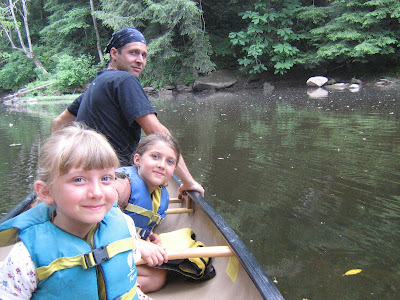 But the river's too shallow this time of year (early summer). We have to practically drag the boat through the riffles. So we find a good place to swim instead:
But the river's too shallow this time of year (early summer). We have to practically drag the boat through the riffles. So we find a good place to swim instead:

 Here's a shot of the property, looking down from the barn, with our new pool in the center:
Here's a shot of the property, looking down from the barn, with our new pool in the center:






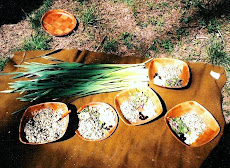









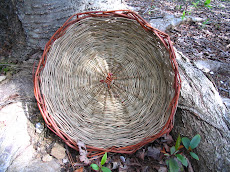



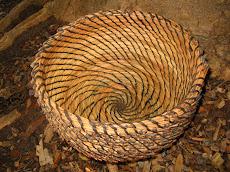



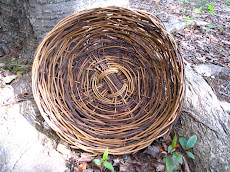

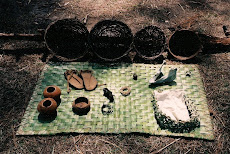


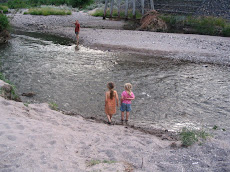

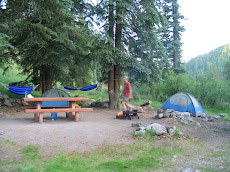


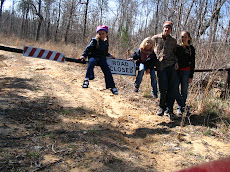

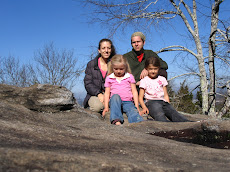




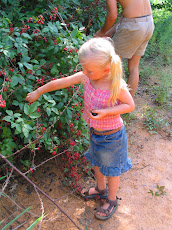







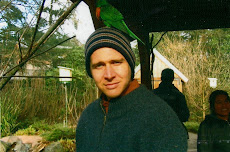
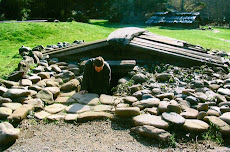

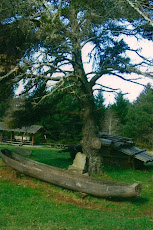



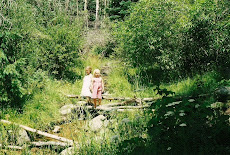
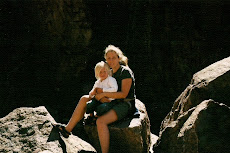
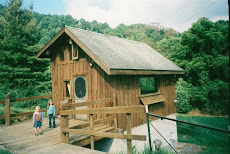

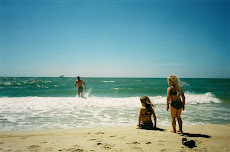
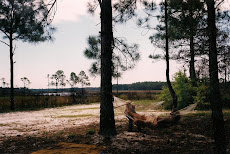

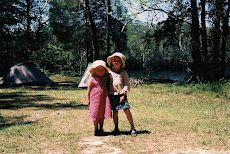.jpg)

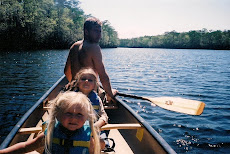.jpg)

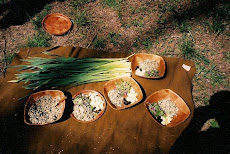
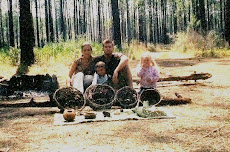
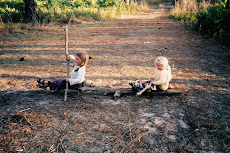.jpg)

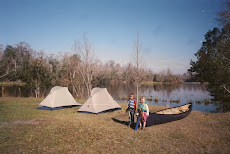

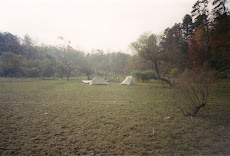
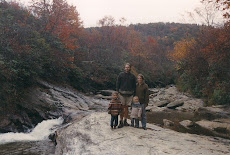
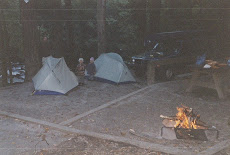


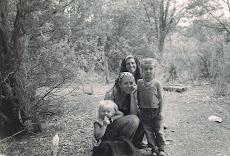.jpg)
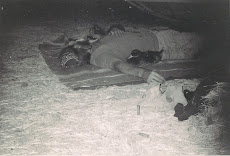.jpg)
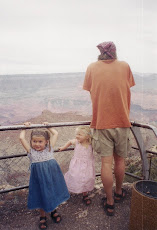
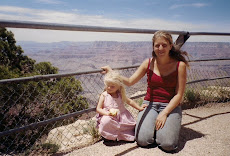.jpg)
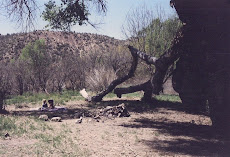.jpg)
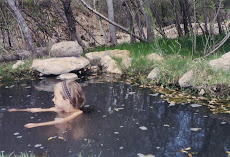
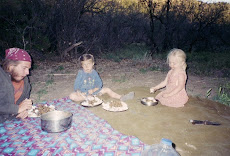.jpg)
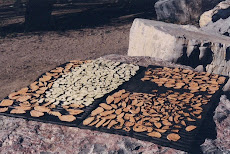
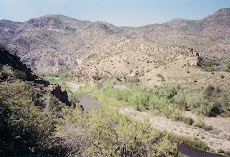.jpg)


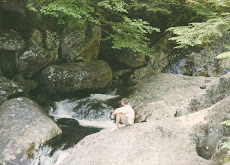

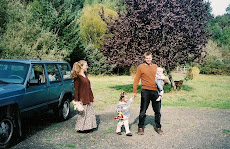





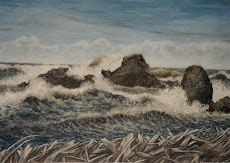




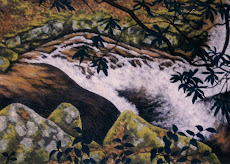






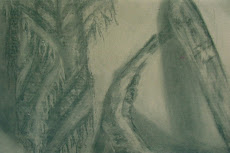

No comments:
Post a Comment